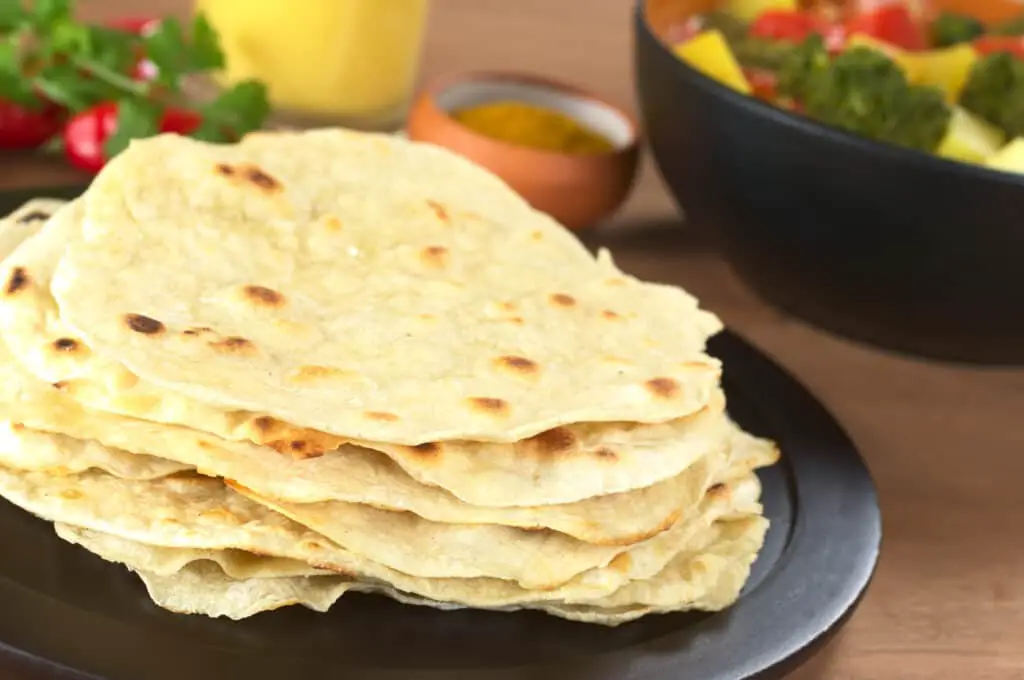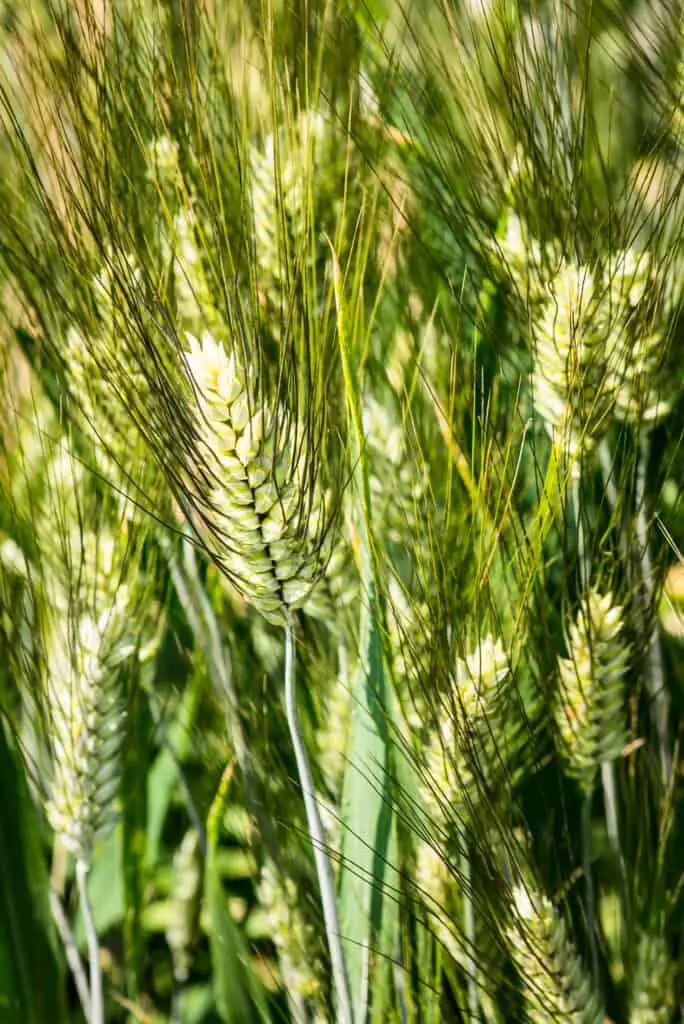Atta flour is a type of wheat flour that is commonly used in South Asian cuisine. It is a staple ingredient in dishes such as roti, chapati, and paratha. Atta flour is made from durum wheat, which is a hard variety of wheat that is high in protein and gluten.
India is the largest producer and consumer of atta flour, with an estimated annual production of 30 million tonnes. However, it is also popular in other countries such as Pakistan and the United States, where it is commonly used in the preparation of traditional South Asian dishes. In recent years, it has gained popularity in the Western world as a healthier alternative to refined wheat flour, due to its higher fiber and protein content.
Overall, it is a versatile ingredient that is an essential part of South Asian cuisine. Its popularity has spread beyond its country of origin, and it is now widely used in many parts of the world.
Understanding Atta Flour
What is it?
Atta flour is a type of whole wheat flour that is commonly used in Indian and Pakistani cuisine. It is made by grinding whole wheat grains into a fine powder and is known for its high fiber content and nutty flavor. It is used to make a variety of traditional dishes, including chapati, naan, and puri.
Types of Wheat Used in Atta Flour Production
Atta flour is typically made from durum wheat, which is a hard variety of wheat that is high in protein. Other types of wheat that may be used in its production include hard red wheat and hard white wheat. These varieties of wheat are also high in protein and are commonly used in bread making.

Atta Vs. Whole Wheat
Atta flour is often compared to whole wheat flour, but there are some key differences between the two. While both types are made from whole wheat grains, atta flour is typically ground more finely than whole wheat flour, which gives it a smoother texture. Atta flour also has a slightly different flavor and aroma than whole wheat flour.
Atta Flour Vs. Wheat Flour
Atta flour is sometimes compared to wheat flour, but the two are not interchangeable. Wheat is a general term that refers to any type of flour made from wheat grains, while atta flour specifically refers to whole wheat flour that has been ground into a fine powder. Wheat flour may be made from a variety of wheat types, including hard red, hard white, and bread wheat.
| Type of Wheat | Protein Content |
|---|---|
| Triticum Aestivum (Bread Wheat) | 10-14% |
| Emmer Wheat | 14-15% |
| Durum Wheat | 12-16% |
| Hard Red Wheat | 10-14% |
| Hard White Wheat | 10-14% |
Table: Protein content of different types of wheat
In conclusion, atta flour is a type of whole wheat flour that is commonly used in Indian and Pakistani cuisine. It is made by grinding whole wheat grains into a fine powder and is known for its high fiber content and nutty flavor. Atta flour is typically made from durum wheat, but other types of wheat may also be used. While it is often compared to whole wheat flour and wheat flour, it is important to note that the three are not interchangeable.
Production of Atta Flour
It is made from durum wheat, which is a hard wheat variety that has a high protein content. The production of atta flour involves several steps, including milling, chakki grinding, and steel rollers.
Milling Process
The milling process is the first step in producing atta flour. During this process, the wheat grains are cleaned and conditioned to ensure that they are free from impurities and have the right moisture content. The grains are then milled to remove the outer layers, which contain the bran and germ. The endosperm, which is the starchy part of the grain, is then ground into flour.
Chakki Grinding
Chakki grinding is a traditional method of grinding wheat grains that is still used in many parts of India. This method involves using a stone grinder, called a chakki, to grind the wheat grains. The chakki is made of two stone plates that are placed one on top of the other. The wheat grains are placed between the plates and ground by rotating the upper plate.
Steel Rollers
Steel rollers are another method of grinding wheat grains that is commonly used in modern mills. This method involves passing the wheat grains through a series of steel rollers that crush the grains and separate the endosperm from the bran and germ. The endosperm is then ground into flour.
In conclusion, the production of atta flour involves several steps, including milling, chakki grinding, and steel rollers. Each method has its own advantages and disadvantages, and the choice of method depends on factors such as the desired quality of the flour and the available resources.

Nutritional Value of Atta Flour
Atta flour is a type of whole wheat flour that is commonly used in Indian and South Asian cuisine. It is made by grinding whole wheat grains into a fine powder, which retains most of the nutrients found in the wheat kernel. In this section, we will explore the nutritional value of atta flour and its various components.
Vitamins and Minerals
Atta flour is a rich source of vitamins and minerals, including iron, calcium, and B vitamins. These nutrients are essential for maintaining good health and preventing various diseases. Here are some of its key vitamins and minerals:
- Iron: It is a good source of iron, which is important for the production of hemoglobin in the blood. Hemoglobin is responsible for carrying oxygen to the cells in the body.
- Calcium: It contains calcium, which is essential for strong bones and teeth.
- B Vitamins: It is a good source of B vitamins, including thiamin, riboflavin, and niacin. These vitamins are important for energy production and maintaining a healthy nervous system.
Protein Content
Atta flour is high in protein, which is important for building and repairing tissues in the body. It contains all the essential amino acids, making it a complete protein source. One cup contains approximately 16 grams of protein.
Fiber Content
Atta flour is high in fiber, which is important for maintaining a healthy digestive system. It contains both soluble and insoluble fiber, which can help regulate blood sugar levels and reduce the risk of heart disease. One cup contains approximately 12 grams of fiber.
Carbohydrates and Sugar
Atta flour is a good source of complex carbohydrates, which provide sustained energy to the body. It also contains a small amount of sugar, which is naturally present in the wheat grain. One cup contains approximately 87 grams of carbohydrates and 1 gram of sugar.
Calories and Cholesterol
Atta flour is a low-calorie and low-cholesterol food, making it a healthy choice for weight management and heart health. One cup of it contains approximately 408 calories and 0 milligrams of cholesterol.
In summary, it is a nutritious and healthy food that is rich in vitamins, minerals, protein, fiber, and complex carbohydrates. It is a good choice for those looking to maintain a healthy diet and lifestyle.
Atta Flour in Baking
Texture and Taste
Atta is a type of whole wheat flour that is commonly used in Indian cuisine. It has a coarser texture than all-purpose flour and a slightly nutty flavor. It is often used to make flatbreads such as chapati, roti, naan, paratha, and puri. It is also used in a variety of other recipes, including baked goods.
When using atta flour in baking, it is important to note that the texture of the final product will be different than if you were using all-purpose flour. It absorbs more liquid than all-purpose flour, which can result in a denser texture. However, this can also result in a more flavorful and satisfying baked good.
Baking with Atta Flour
When baking with atta flour, it is important to adjust your recipe to account for the differences in texture and liquid absorption. Here are some tips to keep in mind:
- Use it in recipes that call for whole wheat flour or a combination of whole wheat and all-purpose flour.
- Increase the liquid in your recipe by ¼ to ½ cup per cup of atta flour used.
- Add extra leavening agents such as baking powder or yeast to help the dough rise.
- Knead the dough well to develop the gluten and improve the texture of the final product.
Atta Flour Recipes
It can be used in a variety of recipes, including bread, dough, and baked goods. Here are some recipes to try:
- Bread: Combine it with yeast, salt, and water to make a simple and flavorful bread.
- Dough: Use it to make dough for chapati, roti, naan, paratha, or puri.
- Cookies: Combine it with sugar, butter, and spices to make a delicious and healthy cookie.
- Muffins: Use it instead of all-purpose flour in your favorite muffin recipe for a healthier and more flavorful option.
Overall, it is a versatile and nutritious ingredient that can be used in a variety of recipes. With a little bit of experimentation and adjustment, you can create delicious and satisfying baked goods.
Health Benefits
Atta flour is used in Indian cuisine. It is made from whole wheat grains that are finely ground. It is known for its numerous health benefits. Here are some of the key benefits:
High in Protein
Atta flour is a great source of protein. It contains around 13 grams of protein per 100 grams of flour. Protein is an essential nutrient that is required for the growth and repair of muscles, tissues, and cells in the body. Consuming atta flour can help meet your daily protein requirements.
Rich in Fiber
Atta flour is also high in fiber. Fibre is important for maintaining a healthy digestive system and preventing constipation. It also helps to regulate blood sugar levels and lower cholesterol levels. Atta flour contains both soluble and insoluble fiber, which makes it a great food for promoting digestive health.
Contains Antioxidants
Atta flour contains antioxidants that help to protect the body against free radicals. Free radicals are unstable molecules that can damage cells and contribute to the development of chronic diseases. Antioxidants help to neutralize free radicals and prevent them from causing damage to the body.
Helps Regulate Blood Glucose Levels
Atta flour has a low glycemic index, which means that it is slowly absorbed by the body and does not cause a rapid spike in blood sugar levels. This makes it an ideal food for people with diabetes or those who are trying to manage their blood sugar levels.
In summary, it is a nutritious and healthy food that offers a range of health benefits. It is high in protein, fiber, and antioxidants and can help regulate blood glucose levels. Incorporating it into your diet can help improve your overall health and well-being.
Choosing Quality Atta Flour
Brand Selection
When it comes to choosing quality atta flour, it’s important to consider the brand. Some popular brands include Pillsbury, Aashirvaad, and Annapurna. However, it’s important to note that the brand name alone doesn’t guarantee quality. It’s always a good idea to do some research and read reviews before making a purchase.
Checking for Quality
To ensure you’re getting a quality product, there are a few things to look for when purchasing atta flour. One important factor is the color. Quality atta flour should have a light cream color, indicating that it’s made from the innermost part of the wheat grain. If the flour is too white, it may be made from the outer layer of the grain, which can result in a lower-quality product.
Another factor to consider is the texture. Quality atta flour should be crumbly and easy to break apart, indicating that it’s been properly milled. If the flour is too fine or too coarse, it may not perform well in recipes.
It’s also important to check the packaging for any signs of damage or tampering. Make sure the packaging is intact and free from any holes or tears.
By following these tips and doing your research, you can confidently choose a quality atta flour for all your baking needs.
Storing Atta Flour
Storing it properly is essential to maintaining its quality and freshness. Here are some tips to help you store it correctly:
Keep it Dry
Atta flour should be stored in a cool, dry place. Moisture is its biggest enemy as it can cause it to spoil quickly. It is recommended to store it in an airtight container to keep it dry and fresh.
Avoid Exposure to Sunlight
Exposure to sunlight can cause Atta flour to spoil quickly. Therefore, it is important to store it in a dark place away from direct sunlight.
Keep it Away from Strong Smells
Atta flour can easily absorb strong smells from other foods. It is best to store it away from strong-smelling foods such as spices, onions, and garlic.
Use it within the Expiry Date
It has a shelf life of about six months. It is best to use it before the expiry date to ensure its freshness and quality.
Avoid Freezing
It should not be stored in the freezer. Freezing can cause it to lose its freshness and quality.
Watch out for Fat Content
Atta flour is low in fat, which makes it a healthy choice. However, if the flour has been stored for a long time, it may develop a rancid smell due to its fat content. It is best to use it before this happens.
In summary, storing Atta flour in a cool, dry, and dark place, away from strong smells, and using it before the expiry date is essential to maintain its quality and freshness.
Frequently Asked Questions
Is atta flour a healthy option for baking?
It is a healthier option for baking than all-purpose flour. It is made from whole wheat grains, which means it contains more fiber, vitamins, and minerals. It is also low in fat and high in protein, making it a good choice for those looking to maintain a healthy diet.
What is the difference between atta and whole wheat?
It is a type of whole wheat flour that is commonly used in Indian cuisine. The primary difference is that it is made from hard wheat varieties, while whole wheat can be made from any type of wheat.
What is the English name for atta flour?
It is also known as Indian wheat or chapati flour.
Can it be used to make bread?
Yes, it can be used to make bread. However, it has a lower gluten content than all-purpose flour, which means that it may not rise as much as bread made with all-purpose flour.
Where can I find Indian wheat flour near me?
Indian wheat flour can be found at most Indian grocery stores or specialty food stores. It may also be available at some larger supermarkets.
What is the cost of Sujata Chakki Atta 20lb?
The cost of Sujata Chakki Atta 20lb can vary depending on the store and location. It is best to check with your local Indian grocery store or online retailer for pricing information.
